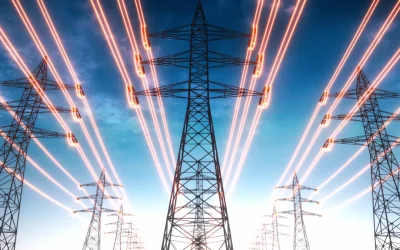Markets – Renewables
Inquiry
On August 2, 2023, the Government of Alberta (“GOA”) issued an order-in-council (“Order”) directing the Alberta Utilities Commission (“AUC”) to hold an inquiry into the ongoing economic, orderly and efficient development of electricity generation in Alberta. The AUC separated the inquiry into two modules to explore the issues identified in the Order. This proceeding was the Module B, which addressed the impact of the increasing growth of renewables on generation supply mix and electricity system reliability.
Module B Report
The AUC described the transition of the electricity system as a balance between the following three pillars: decarbonization; affordability; and reliability. According to the AUC, each pillar is crucial but interlinked with the other pillars as Alberta is working to decarbonize its electric system while minimizing the impacts on affordability and reliability.
In the AUC’s view, renewables will play an important role in transitioning Alberta’s electric system to net zero. However, the intermittent nature of renewables, as well as other characteristics of inverter-based resources, will have increasing impacts on the grid as they make up a larger portion of Alberta’s generation supply mix.
In this proceeding, the AUC examined the following: the electric energy supply adequacy and generation supply mix; pool prices, price volatility and affordability; and the potential role of demand response. The AUC concluded that market and policy framework changes are necessary to accommodate the transition.
The AUC made the following observations in the Module B report:
- Many aspects of system reliability are impacted by renewable generation, with the Alberta Electric System Operator (“AESO”) assessing options to address the key areas of reliability in the short term;
- Under the current market design, expected unserved energy in the late 2030s will be significant and with a potential for unprecedented load-shed events, and an increased rate of decarbonization, i.e., net zero by 2035 instead of 2050, will exacerbate the supply adequacy issues;
- Renewables lower pool prices and increase volatility, reducing the signal for dispatchable generation to enter the market;
- Under the current market design, increased renewables will exacerbate the supply adequacy issues;
- Newer low-carbon technologies could be considered first-of-a-kind but carry a greater level of associated risk, particularly under the 2035 decarbonization target;
- Energy storage can play a role in reducing the supply adequacy issues but it is not a complete solution since it is not expected to be economic under the current energy market design and the AESO tariff;
- Given the scale of the expected unserved energy, minor changes to the supply mix assumptions will not alleviate the supply adequacy concerns;
- Under the current market design, pool prices will continue to be stable but are expected to increase at a rate above inflation in the 2030s, and an increased rate of decarbonization, i.e., net zero by 2035 instead of by 2050, will exacerbate the affordability issues;
- Demand response has some potential to mitigate the supply adequacy impacts and reduce future costs to electricity consumers;
- Investors are concerned about the current level of policy uncertainty; and
- Under the current market design, by the late 2030s, consumers would be paying significantly higher rates for electricity, while receiving a substantially lower level of reliability, which makes changes to the market design and policy framework necessary.
Additionally, the AUC made a commitment to explore the demand response opportunities, including time-varying rates, as a priority item in the near term.



